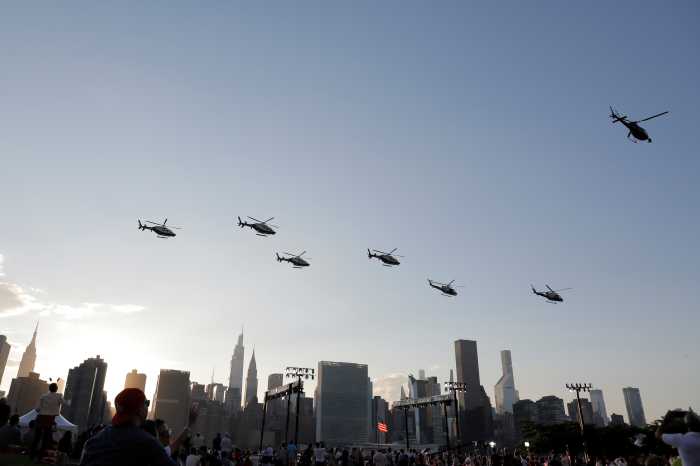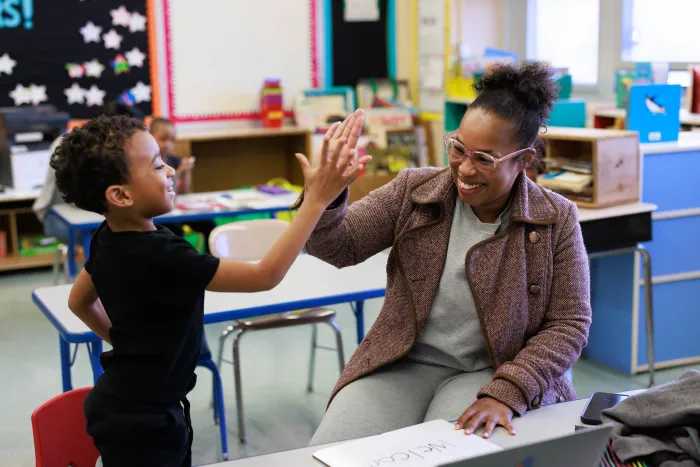BY SARAH FERGUSON | Facing accusations of fraud and disenfranchisement, the New York City Board of Elections voted unanimously last week to certify the results of New York’s hotly contested April 19 presidential primary. But the results are sure to leave many unsatisfied. The board threw out nearly 91,000 of the 121,056 provisional ballots cast by voters who had been unable to vote on primary day either because their names were taken off the rolls or because their party affiliation had been dropped or switched to a different party without their knowing. So roughly three-quarters of the affidavits were deemed invalid and not counted, according to the tallies posted on the Board of Elections Web site last Friday.
That’s in addition to all those who did not file affidavits because they were not aware they could or because their polling places ran out of them.
In Brooklyn alone, some 126,000 registered voters were removed from active status between November of last year and this April — or roughly 8 percent of the borough’s active voters.
It’s the only county in the state that lost voters in that time period.
The B.O.E. says most of the affidavit ballots it rejected were submitted by people who are not affiliated with any party and hence ineligible to vote in New York’s closed primary. But critics say the board’s accounting is flawed because they relied on the same faulty voter data that was used to purge people from the rolls in the first place.
“They just rubber-stamped it, even though the board knows full well that the results were incomplete and inaccurate,” said Andrew Fader, a certified poll watcher from the Bronx who went to observe the counting of the affidavit ballots as a representative of a Bernie Sanders delegate.
“Most of those affidavits weren’t counted because the way that they validate affidavits is by checking them against the same voter database that those people weren’t in, which caused them to have to vote by affidavit in the first place,” Fader charged.
Fader also complained that he and other campaign representatives were not allowed to witness the process by which affidavits were deemed invalid, and were not given the names of people purged, so they could follow up — information he said the board was legally required to provide to the campaigns.
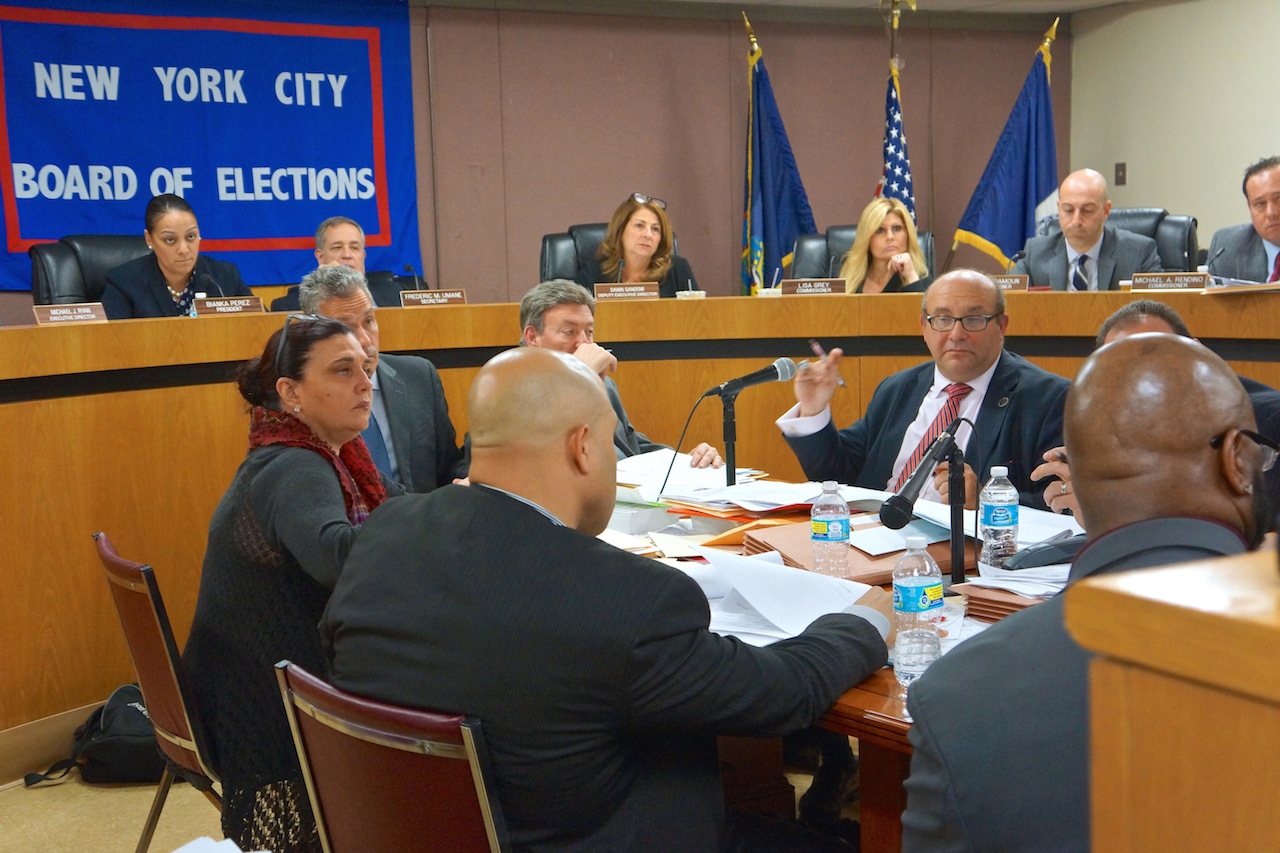
In an interview with The Villager following the certification on Friday, the B.O.E.’s embattled executive director, Michael Ryan, acknowledged that the board had failed to follow proper procedures when it purged people from the Brooklyn rolls.
But Ryan insisted that the board had gone out of its way to make sure all eligible votes were counted.
“We meticulously combed through all the affidavits in Brooklyn, and all the five boroughs, to make sure if any were improperly purged, and if they were, we would reactivate their registration and make sure their vote was counted,” Ryan said.
Some 30,000 votes were restored, Ryan said, adding, “For the balance of the list, we’re going to have to rely on voters to get back to us.”
By law, citizens who want to contest the invalidation of their ballot have just 20 days following the certification of the vote to do so. So that deadline is May 26.
The board is required to notify by mail all those whose votes were invalidated — or “archived” in the parlance of the B.O.E. But considering its poor track record in keeping New York City voters informed and up to date thus far, many wonder whether the notices will reach people in time.
Voting rights groups — including Election Justice USA, which went to court in Suffolk County last week seeking to delay New York’s certification — are encouraging anyone who filed an affidavit ballot to contact the B.O.E. offices in person to check the status of their ballot.
If people feel their vote has been improperly disqualified, they can file a legal challenge in state court.
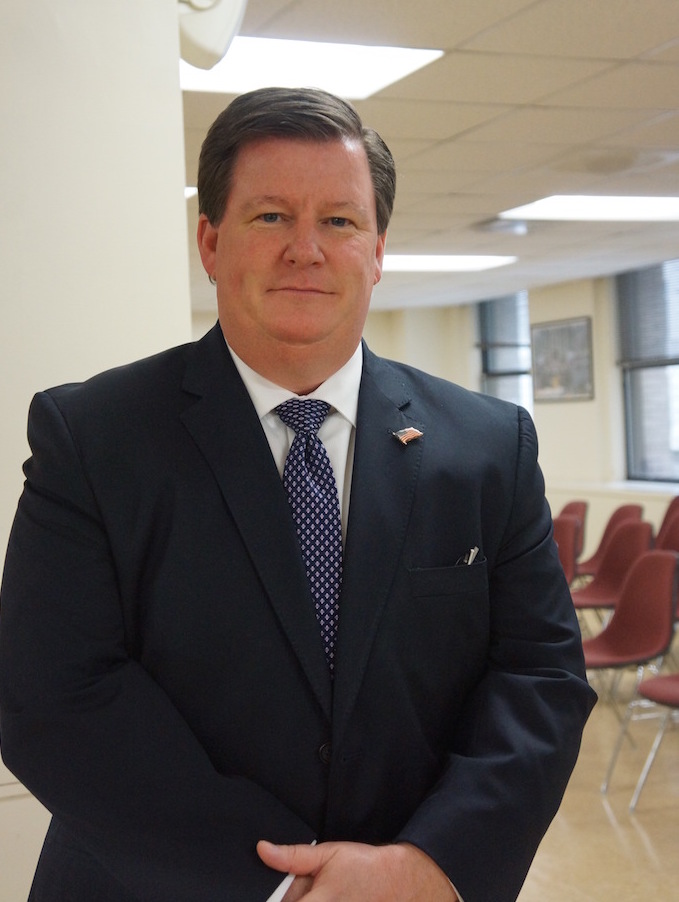
Ryan said none of the invalidated ballots were tossed; rather, some 90,998 were set aside for possible “further review.”
“This was the best we could do in the circumstances,” Ryan explained. “We focused our counting based on our initial validation process. We took all the invalidated ballots and checked the system to see whether they were purged properly. If we could not justify the ‘archiving’ of that voter, it was the judgment of the commission to count that vote.”
Voting rights groups say now that the certification process is complete, they can move forward to challenge the results.
“The [primary] certification formally starts the process where everything will become official,” explained Jonathan Clarke, a lawyer for Election Justice USA, speaking on the Internet news show “The Young Turks” last Thursday. “There’s been a couple of occasions before in New York City when they’ve certified an election and they went back and looked at affidavit ballots, absentee ballots, and they got added or subtracted from the total,” Clarke said.
In addition, both state Attorney General Eric Schneiderman and City Comptroller Scott Stringer have launched investigations of the B.O.E. in the wake of last month’s botched primary. There have been reports of similar widespread purges of voters in Suffolk County (where 90 percent of the affidavits cast were tossed) and Nassau and Westchester counties.
It is unlikely that legal challenges and investigations will alter the overall result of New York’s Democratic primary. According to the now-official results, Hillary Clinton beat Sanders by 1,054,083 to 763,469 votes statewide, or roughly 290,000 votes.
But because New York awards delegates proportionally — based on how many votes a candidate receives in a particular Congressional district — advocates are determined that every vote be counted accurately.
At a raucous public hearing on May 3, several poll watchers accused the B.O.E. of counting affidavit ballots behind closed doors. Jesse Bonelli, a certified poll watcher for Sanders, testified that he was allowed to watch the counting of absentee ballots in the Brooklyn borough office.
“But when it came time to count the affidavits, I was told I could not see it,” Bonelli said. “The ballots were being processed and verified in another room. But we only got to see the ones that were verified. Where are the ones in the back room? Two-thirds of the ballots were turned away that we were not able to see,” he told the commissioners.
Similarly, poll watcher Fader, who was certified to represent Sanders delegate Nicolas Dedual in the 13th Congressional District, said he went on April 29 to observe the counting of the affidavit ballots at the Bronx borough office.
“I arrived at Friday at 11 a.m. and they didn’t let me see a single thing until 4 p.m.,” he said. “All that time, they kept stonewalling me, but they were basically just invalidating the affidavits in the back room.
“They are supposed to provide a list of the invalid affidavits to the delegate representatives, so we can contact the voters to see if they feel their votes should be counted,” Fader continued. “They said we could have that information, but we got nothing. Now there’s all these people whose data was lost and we can’t object.”
Responding to him and the scores of other pissed-off voters who packed the May 3 hearing, B.O.E. Chairwoman Bianka Perez insisted the “proper procedure for counting affidavits” had been followed.
In a follow-up interview with The Villager last Friday, Ryan said the poll watchers were not allowed to see the affidavits that were invalidated because of the need to “maintain the secrecy of the ballot.”
When an affidavit is submitted at the polls, it is placed in an envelope that the voter must sign, Ryan explained. Before even opening the envelope, Ryan explained, B.O.E. staffers look first to see if the voter is legally entitled to vote in the primary.
“If you’re not a registered Democrat or Republican, you’re not entitled to vote in the primary, so your ballot is invalidated because a) you’re not registered at all or b) you’re not registered to a particular party or c) you did not fill out the affidavit properly, i.e. you didn’t sign it. That’s a legal defect,” Ryan said.
“So all those envelopes never got opened because we have to maintain the secrecy of the ballot,” Ryan stated.
Only the affidavits submitted by eligible voters were opened, Ryan said: “The procedure is, once the envelopes are going to be opened, the opening process is public, and party representatives or attorneys for the candidates can be seated at the table. Otherwise, there’s a cordoned-off public area.”
Ryan said the widespread purging of voters in New York City stemmed from a 2013 audit by the city’s Department of Investigation that found there were too many voters on the rolls.
“So in early 2014, the Brooklyn borough office undertook voter list maintenance,” he said. “Anyone who didn’t vote in 2008 or earlier was flagged to receive an intent-to-cancel notice.”
Almost 124,000 of those notices were sent out, Ryan said.
“Of those, over 6,000 were returned,” meaning people sent back a mailer confirming their address and current voting status.
“In the case of the other 117,000, there was no response, and so we cancelled those voters. They were supposed to be sent actual cancellation notices,” Ryan explained. But in the Brooklyn borough office, Ryan conceded, “they skipped that step” — meaning the voters were not informed they were being placed on the “inactive” list.
Ryan admitted that there was an “unusually high number” of voters purged from the lists — a fact that was even flagged during a B.O.E. hearing last July.
“We discussed this — and that the Brooklyn board was behind in its list maintenance by several years,” he acknowledged.
Ryan said the commissioners took this to be a reasonable explanation for why so many voters would be deemed invalid.
“According to a 2014 presidential report, a full 40 percent of the United States relocates at any one time in the calendar year,” Ryan told The Villager. “That’s probably higher in urban settings. Not everyone moves under the most ideal circumstances, so people can get lost in the shuffle.”
Ryan suggested other ways in which people’s voting status might have been invalidated or changed without them realizing it.
“In New York, we also have voter registration through the D.M.V.,” or Department of Motor Vehicles. Under the so-called “Motor Voter” law, states are required to offer people the opportunity to register to vote or update their voting status when they apply for or renew a driver’s license.
“There’s a box for you to check your party affiliation,” Ryan said. “If you leave it blank, we default that to unaffiliated. We can’t assume you wanted to remain in the party that you were previously enrolled in.”
The city’s welfare office also mails out voting registration forms, which people may mistakenly submit without checking their party status.
“Last in time is first in line,” Ryan added, repeating the B.O.E.’s slogan for how it determines party affiliation.
Other voters may have run afoul of the U.S. Postal Service’s change-of-address process.
“We get a report once a year in May from the State Board of Elections, which gets a report from the U.S. Post Office telling us all the people who moved. We are required to process those address changes,” Ryan said. As a result, some voters may have had their polling places changed.
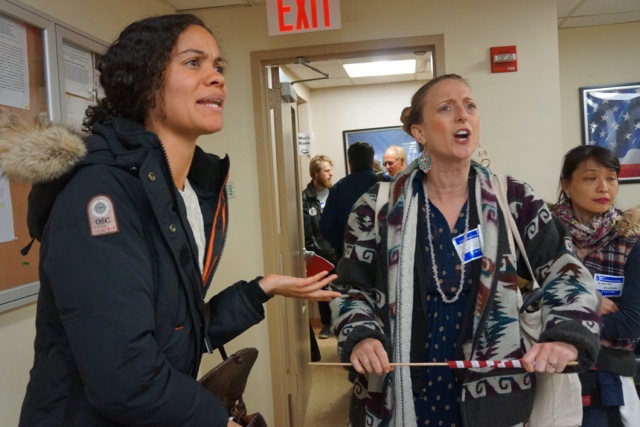
Nevertheless, there were numerous reports of voters who had lived and voted in the same place for decades missing from voter lists at polling sites, as well as newly registered voters who met cutoff deadlines for registering, yet were not included in the rolls.
In an effort to rein in such errors, last week the City Council voted on three bills to ease voting and improve transparency. The first bill will require the New York City B.O.E. to post notices at former polling sites informing voters of the new polling site location. The second bill requires the B.O.E. to send e-mail and text messages to voters who have opted to receive information alerts — alerts that could inform them when their party affiliation has been changed, for example. And the final bill requires the B.O.E. to provide a Web site and mobile app that gives the public easy access to their voting status and tools.
In addition, the B.O.E. announced that a second official, Democrat Betty Ann Canizio, the deputy clerk at the Brooklyn borough office, was suspended without pay during the ongoing investigation into problems at poll sites on primary day.
The board had already suspended the Brooklyn borough office’s Republican clerk Diane Haslett-Rudiano on April 21, following the revelation that 126,000 voters had been purged or rendered inactive in the borough in the six months leading up to the primary.
Ryan said the B.O.E. is taking steps to correct its records.
“We’ll be meeting with the State Board [of Elections] and putting our technical people together to make sure our info is as accurate and up-to-date as possible,” he told The Villager.
Ryan termed the ongoing controversy and distrust engendered by the widespread voting problems “unfortunate.” But he blamed outside groups for contributing to the chaos.
“We received advance notice that there were going to be individuals who want to use this process as a cause célèbre — to make an issue over the fact that New York’s primary is closed.”
“The vast majority of complaints are from individuals not registered in the party they were attempting to vote in,” Ryan said.
Just prior to the primary, the group Election Justice USA — which filed suit on April 18 after the initial discovery of widespread voter purges in Brooklyn and Long Island — posted a notice on its Facebook page, urging independents and people registered in third parties to try and vote in the Democratic and Republican primaries anyway.
This was an apparent effort to bolster the group’s case that New York’s closed primary system is unnecessarily restrictive and hence unconstitutional.
New York requires voters to declare their party affiliation six months prior to a primary election in order to be eligible to vote — the earliest cutoff of any state.
It is unknown how many people heeded the advice of Election Justice, but if they tried to file affidavits, that no doubt boosted the count of those voters deemed ineligible in the primary.
According to a source, Election Justice withdrew its motion to block the primary certification last week after a federal judge on Long Island threatened to fine the group.
The City Council is conducting an oversight hearing of B.O.E. operations on Fri., May 13, at 12:45 p.m. at the Council Chambers in City Hall.




